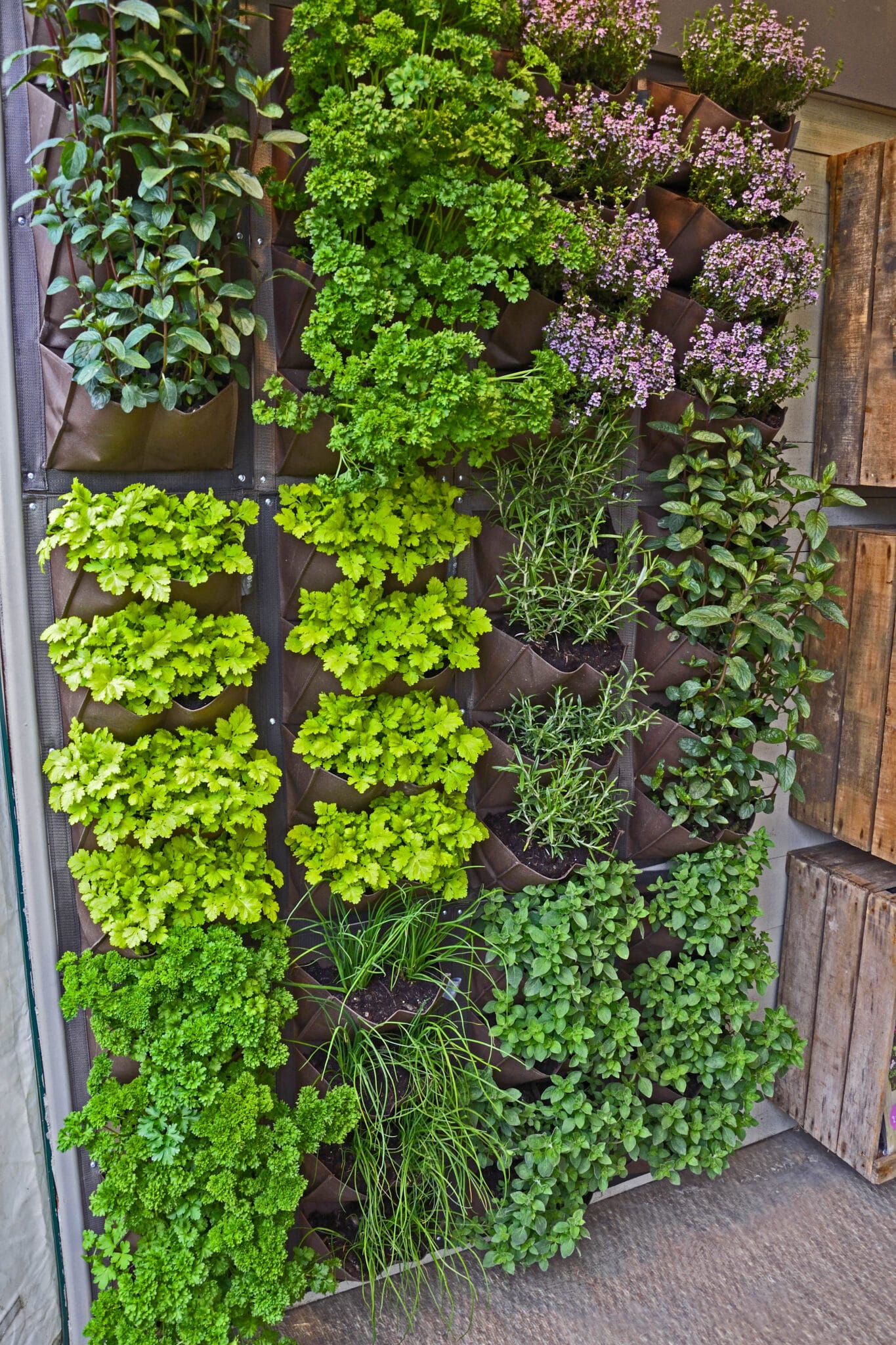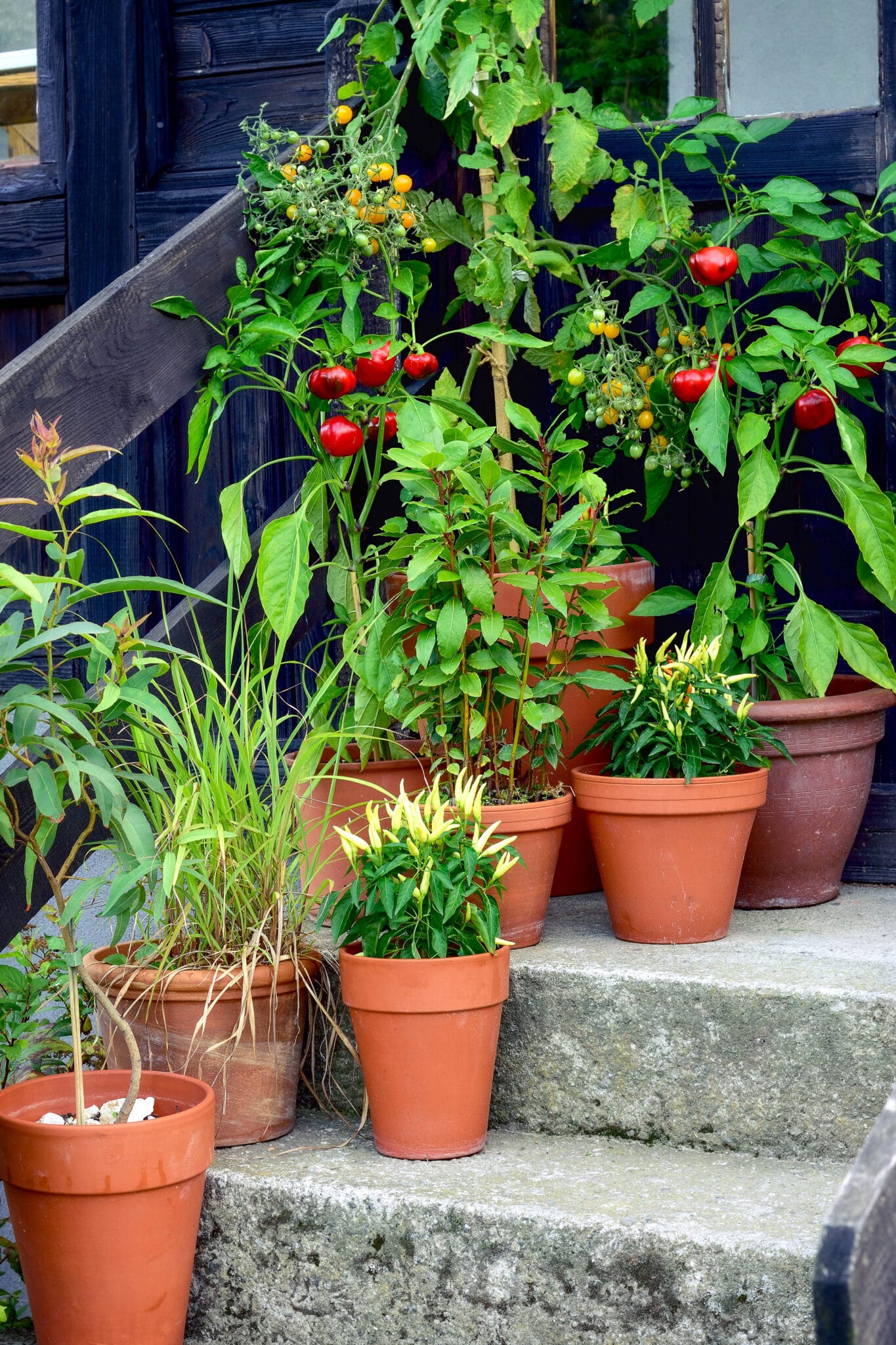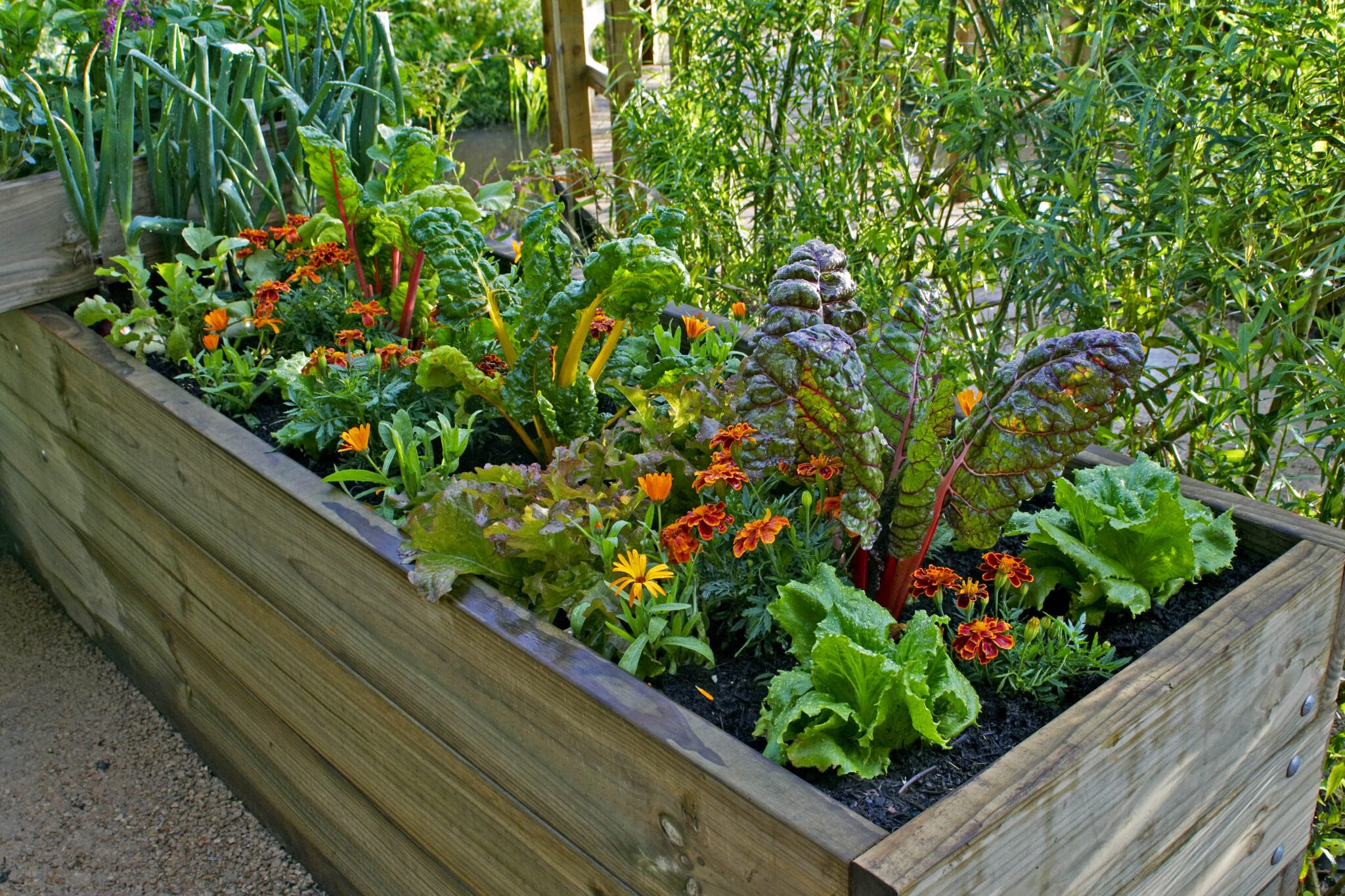11 Garden Ideas for Small Spaces and Maximum Yields
Have a tiny space but longing to plant a bountiful garden? It’s totally possible to have an amazing garden even if you have a home with little to no yard! These garden ideas for small spaces can help you build the garden of your dreams, no matter what the square footage.
If your home has a tiny yard or a small outdoor living space, you can still flex your green thumb and have an amazing garden. You can do it all without a ton of work or financial investment, which is always nice!
Whether you are an urban dweller wanting to try out rooftop gardening or you have a condo with a small patio, these garden ideas for small spaces will help you get the best ‘bang for your buck’.

Affiliate Disclosure
This post may contain affiliate links. If you click one and purchase, I may receive a commission at no additional cost. You can read our disclosure policy here.
Best Garden Ideas for Small Spaces
A small space doesn’t need to prevent you from having the outdoor space of your dreams. It means that you need to get a little more creative about planning and structuring your gardening space.
These tips are not only clever and effective, but they also create beautiful gardenscapes in any size space.
1: Hanging Gardens & Wall Planters
When space is tight, the best way to grow more is to stop looking at the ground and start using your walls, railings, and ceilings. Hanging planters, wall-mounted pockets, and repurposed pallets let you garden upwards, making the most of every inch.
Wall-Mounted Planters & Pocket Gardens
If you’ve got a bare wall, fence, or balcony railing, why not turn it into a lush vertical garden? Wall-mounted planters, hanging fabric pockets, and even shallow wooden boxes can hold herbs, flowers, or compact veggies while keeping everything neat and within easy reach.
DIY Idea: Got an old wooden pallet lying around? Attach small pots or plant directly in the slats to create a rustic, space-saving vertical garden.
Hanging Baskets for a Cascading Effect
Hanging baskets aren’t just for porches—they’re perfect for balconies, pergolas, or even a sunny indoor spot. Trailing plants like nasturtiums, strawberries, and creeping herbs look stunning draped over the sides, plus they help maximize space without cluttering up the ground.
- Takes advantage of overhead space
- Keeps plants at eye level for easy care
- Works indoors or outdoors—just find a sunny spot!
Pro Tip: If you hate constant watering, look for self-watering hanging baskets—they keep plants hydrated longer and make life easier.
Get Creative with Upcycled Hanging Planters
If you love a good DIY project, you can turn almost anything into a hanging planter. Colanders, mason jars, tin cans—even an old fabric shoe organizer—can all be repurposed into quirky, space-saving garden containers.
No matter how small your space is, going vertical gives you more room to grow. Whether you opt for wall pockets, baskets, or DIY planters, these solutions help you create a lush, thriving garden without taking up any extra ground space.

2. Use Trellises
One of my favorite gardening ideas for small spaces is using a trellis to grow plants upwards. Trellised plants require less water, have better structure, and increase airflow. Additionally, they are easier to harvest and will provide shade for other shade-loving plants.
You can purchase a trellis in different styles, but they are also relatively easy to DIY if you want to save some cash. Vegetables that grow well on a trellis include:

3. Stackable Planters for Vertical Growth
Another great way to utilize vertical space is stackable planters. Stackable planters let you grow upward instead of outward, making them perfect for small patios and balconies. They work well for herbs, strawberries, leafy greens, and flowers, allowing you to layer plants for a fuller, lush look.
- Maximizes vertical space
- Great for small patios, decks, and balconies
- Keeps plants organized and easy to access
Pro Tip: Look for stackable planters with wheels so you can easily move them around to catch the best sunlight or free up space when needed. Perfect for patios, balconies, or anywhere you need a little extra flexibility!
4: Container Gardening
Container gardening is a great method for growing pretty flowers, fruits, vegetables, and herbs, even if you have no yard! I love that you can grow different pot items and then rotate them or group them differently for a new look.
Plus, container gardening has one very real advantage over typical in-ground gardening—you can take your containers with you if you have to move!
As if those reasons weren’t enough, growing vegetables in pots save tons of gardening space while reducing threats from pests and weather.
One beautiful way to do container gardening is to stack terracotta pots inside of each other to build a tiered garden. Not only will this save space over having multiple pots on the ground, but they can be quite pretty as well!
Vegetables that grow well in containers include:

Potted Fruit Trees
Surprisingly, even fruit trees will do well in a container garden. Most fruit trees will grow well in containers for a short time (and then need to be transplanted to the ground); however, if you want to grow fruit potted trees long-term, try growing calamondin orange, plum, apple, fig, or a dwarf variety of your favorite fruit trees.
With fruit trees, know that they rarely bear as much fruit as if the same tree planted in the ground would. Potted fruit trees also tend to produce fruit a season or two before planted trees do.
Note: Planters will freeze faster than the ground, so choose a fruit tree variety that can survive at least two zones colder than where you live.
Learn More: Check out our full guide to growing citrus trees in pots.

5: Square Foot Gardening
Square foot gardening is a very efficient idea for small spaces that divides raised beds into a grid. Because the raised bed is filled with a nutritious dirt mix, you can use this method on top of any surface, like grass or concrete.
The square-foot gardening idea is a great method for small vegetable gardens because it produces high yields in a small area (typically 4’x4’ raised beds) through companion planting (see below) and efficient plant placement.
To learn more, check out our articles on square foot gardening:
Learn More: Need a little help planning your small garden? Check out our premade small garden plan for an easy layout to maximize space. If you’re considering square foot gardening, be sure to read our pros and cons guide to see if it’s the right fit for you!

6: Try Companion Planting
Companion planting involves growing certain plants near each other to attain mutually beneficial qualities (repelling pests, nutrient requirements, etc.) to help both plants grow efficiently and produce better yields. It’s a space-saving technique that keeps plants happy while attracting more pollinators.
Learn More: Check out our guides to companion planting with flowers and companion planting with vegetables.

7: Choose Plants That are Perfectly Sized for a Small Garden
Along with growing vegetables vertically, plant vegetables are meant to be grown in small garden spaces. You can do this in several ways, from planting dwarf varieties of your favorite vegetables to planting single-leader tomatoes.
Dwarf Varieties
While several design tips provide garden ideas for small spaces, another factor to consider is your plant size. Instead of planting full-size vegetables, which take up a lot of space, consider growing dwarf-sized vegetables. You’ll be able to grow more in less space. Here are a few dwarf varieties perfect for small vegetable gardens:
- Cauliflower
- Cherry Tomatoes
- Baby Eggplants
- Dwarf Lettuce
- Baby Artichokes
- Dwarf Sunflowers
- Dwarf Carrots
- Dwarf Avocados
- Dwarf Fruit Trees

Single Leader Tomatoes
Bushy and multi-leader tomato plants occupy more space than single-leader (stem) tomato plants. If you need to be mindful of your space allowance, grow single-leader tomatoes and enjoy large yields using less space.
To do this, you must grow indeterminate tomato plants, which grow more vine-like than bush-like.
Improve the health and structure of your plants by training them into single-leader tomatoes with these steps:
- When you plant your indeterminate tomato plants, also place a 6 ft tall stake with them and tie the main stem to the stake once it reaches about 10-12 inches in length.
- As your plant grows, tie the main stem to your stake at 8-10 inch intervals.
- Regularly inspect your tomato plant for suckers (side stems) and pinch them off at the spot where they come out of the main stem. Remove suckers when they are no more than 2-4 inches long.

8. Grow Bags for Flexible Gardening
Grow bags are fabric containers that provide excellent drainage and aeration, making them perfect for root vegetables, tomatoes, and peppers. Plus, they can be moved around to optimize sunlight exposure!
- Lightweight and portable
- Great for renters—just pick them up and move them!
- Stores flat when not in use
Tip: Look for breathable grow bags to help prevent overwatering and promote healthier root growth.
9. Plant Varieties That Have Higher Yields
Certain vegetables will naturally produce more than other varieties of plants will. If you want to focus your small garden space on the vegetables that provide the highest yield, try planting:
- Peas
- Zucchini
- Salad greens
- Pole beans
- Cucumbers
- Tomatoes
Cucumbers can produce such a big crop that you don’t even know what to do with them all; ask me how I know! I had to create this list of ideas to use up extra cucumbers.

10: Plant Back-to-Back Crops
If you live in an area that has a longer growing season, make the best use of your small space by growing back-to-back crops. There are several different ways to do this, but the basic idea is to plant one round of a certain vegetable (like lettuce), and then plant another batch of seeds a few weeks later.
That way, once you harvest your first batch, you’ll soon have another batch to harvest. You can keep repeating this method the entire season or until the seeds stop sprouting.
11. Indoor Herb & Microgreens Station
No outdoor space? Grow fresh herbs and microgreens right in your kitchen! A windowsill herb garden or a small indoor grow light setup allows you to grow basil, parsley, mint, or microgreens year-round.
- Fits in any kitchen or windowsill
- Provides fresh, homegrown ingredients year-round
- Low-maintenance and quick-growing
Tip: Use mason jars or small ceramic pots for a stylish indoor herb garden display.
Garden Ideas for Small Spaces – Final Thought
If you want to garden in a small space, grow upward! Don’t hesitate to get creative. This tip and other garden ideas for small spaces on this list will help you make the most of your small space and still enjoy a bountiful harvest this year.
What’s your biggest small-space gardening challenge? Drop a comment below!
More Gardening Inspiration

Author: Laura Kennedy
Writer & Owner of Little Yellow Wheelbarrow
Laura is a highly skilled gardener and fervent flower enthusiast. Despite her playful battle with plant spacing guidelines, Laura’s work inspires gardeners to create thriving, beautiful spaces that reflect both creativity and sustainability.
Editorial Note: This article was originally published on February 13, 2021. It was updated on December 3, 2024 to include more information and improve readability.













